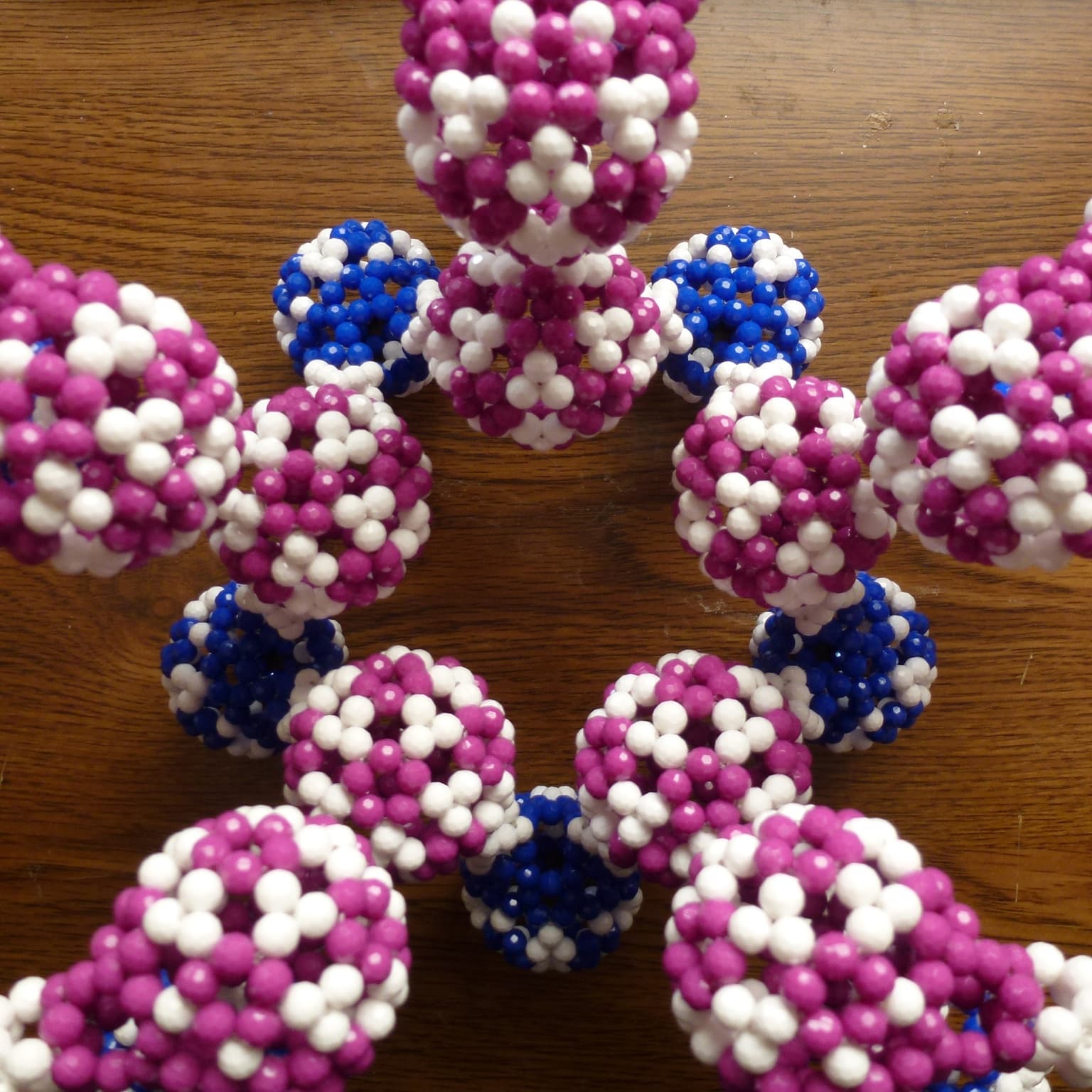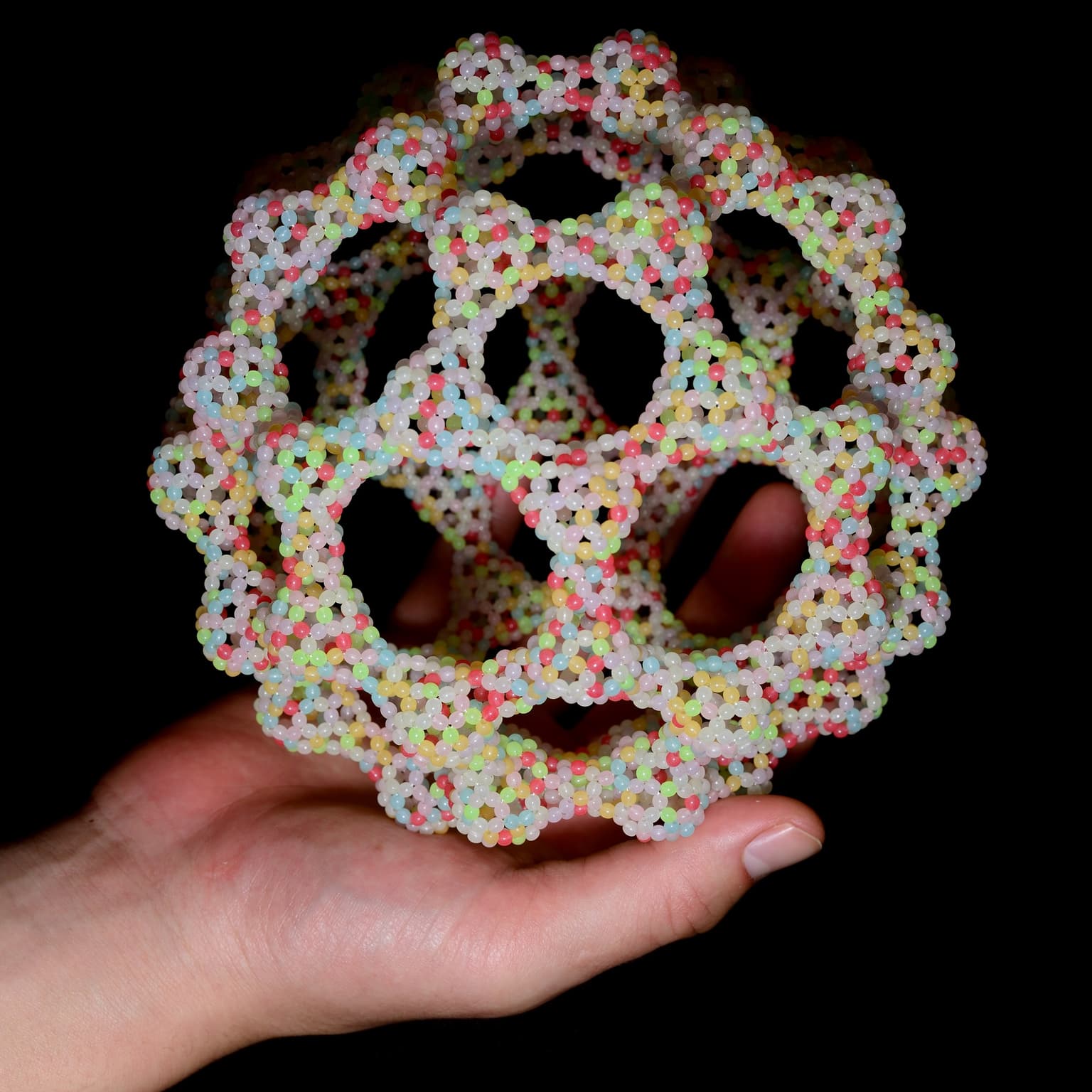Chern Chuang
Artists
Chern Chuang
Graduate Student
Chemistry Department, Massachusetts Institute of Technology
Cambridge, MA
Statement
We apply the principles of zome geometry to the construction of complex beaded molecules. Here we put special attention to a family of hypothetical molecules called superfullerenes. They are designed in such a way that each of the atom of a parent molecule (A) is replaced by a buckyball (C60), and the connectivity of the parent molecule is retained in the resulting superstructure (denoted by A⊗C60) by connecting the C60s with straight carbon nanotubes. Both making beaded molecules and proposing reasonable chemical structures require the superstructure to have minimal strain energy. The complexity of this seemingly difficult task can be largely reduced if we make clever use of the properties of zome geometry, that both the C60 and the ball of zometool have icosahedral symmetry and the struts connecting the balls always lie along certain common symmetry axes of the balls. Please see the companion short paper of us for more detailed description.
Artworks

Superdodecahedron with V-shaped Connections⊗C80
43 x 41 x 37 (cm)
6mm plastic beads, fish lines
2013

C60⊗C60
17 x 17 x 17 (cm)
Glow-in-the-dark 3mm beads, fish lines
2013